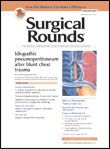Recognizing MRSA Infection Risk in Diabetic Foot Ulcers
Since nearly half of all Staphylococcus aureus infections harbor difficult-to-cure methicillin-resistant (MRSA) isolates, identifying MRSA risk factors could improve infection prevention and treatment, as well as reduce resistance patterns.

Approximately 25% of diabetic patients will develop an ulcer in their lifetimes, 50% of which will become infected. Since nearly half of all Staphylococcus aureus infections harbor difficult-to-cure methicillin-resistant (MRSA) isolates, identifying MRSA risk factors could improve infection prevention and treatment, as well as reduce resistance patterns.
In a retrospective cohort study on MRSA-infected ulcers in diabetics, a group of researchers across the United States gathered data from 57 consecutive patients hospitalized for diabetic foot infections to evaluate risk factors for MRSA.
According to the report published in Diabetic Foot & Ankle, the overall prevalence of MRSA in patients with diabetic foot infections was 29.8%. Using that data, the researchers identified 3 risk factors for MRSA infection: the presence of multidrug-resistant organisms, history of a MRSA diabetic foot infection, and MRSA nasal colonization.
Although hospitalization within the previous 12 months was also associated with MRSA, it was not considered a risk factor, possibly due to limitations in the study design. Notably, the study did not associate previously recognized MRSA risk factors — including antibiotic treatment prior to hospitalization and nursing home residence — with diabetic foot infections.
The study’s most relevant finding was a correlation between MRSA-positive nasal swabs and risk of MRSA diabetic foot infection development, as those with MRSA-positive nasal swabs indicating carrier or colonization status were 4 times more likely to develop diabetic foot infections with MRSA isolates.
Nevertheless, the researchers concluded that MRSA-positive nasal swabs did not always predict the infectious agent in diabetic foot infections, because some patients with MRSA-positive nasal swabs had other infections. However, a MRSA-negative nasal swab ruled out MRSA as the infecting organism with 90% accuracy.
The study authors noted that including a MRSA-positive swab as a risk factor might ultimately alter protocols for the management of diabetic foot infections. They suggested one such change might involve administering immediate intravenous antibiotics in patients who have MRSA-positive nasal swabs.
